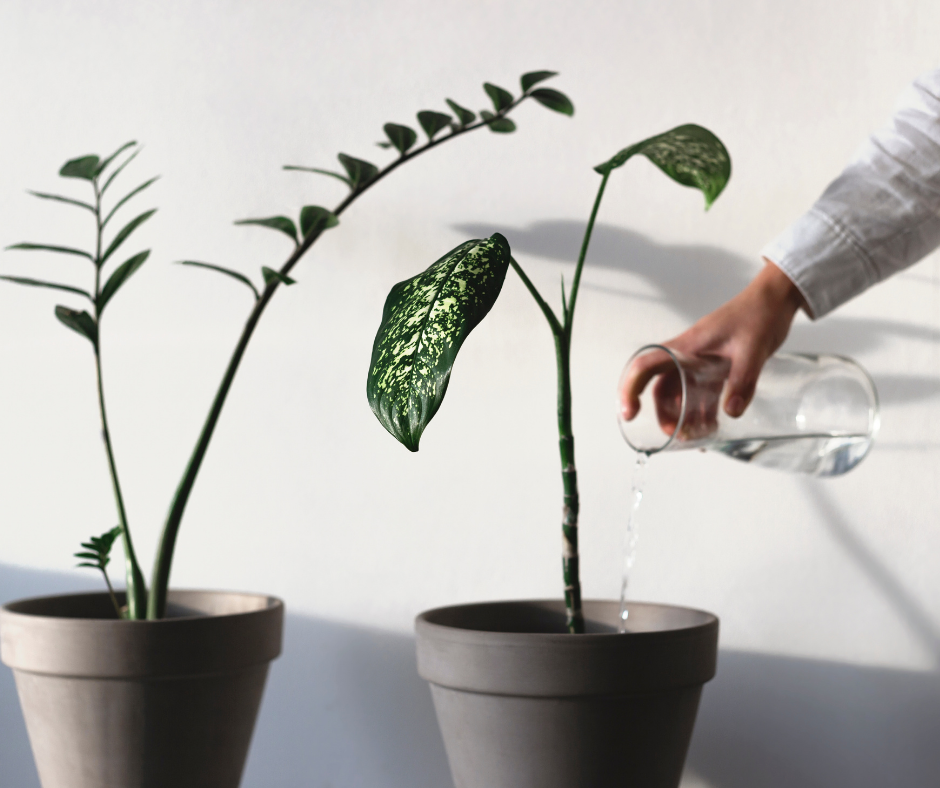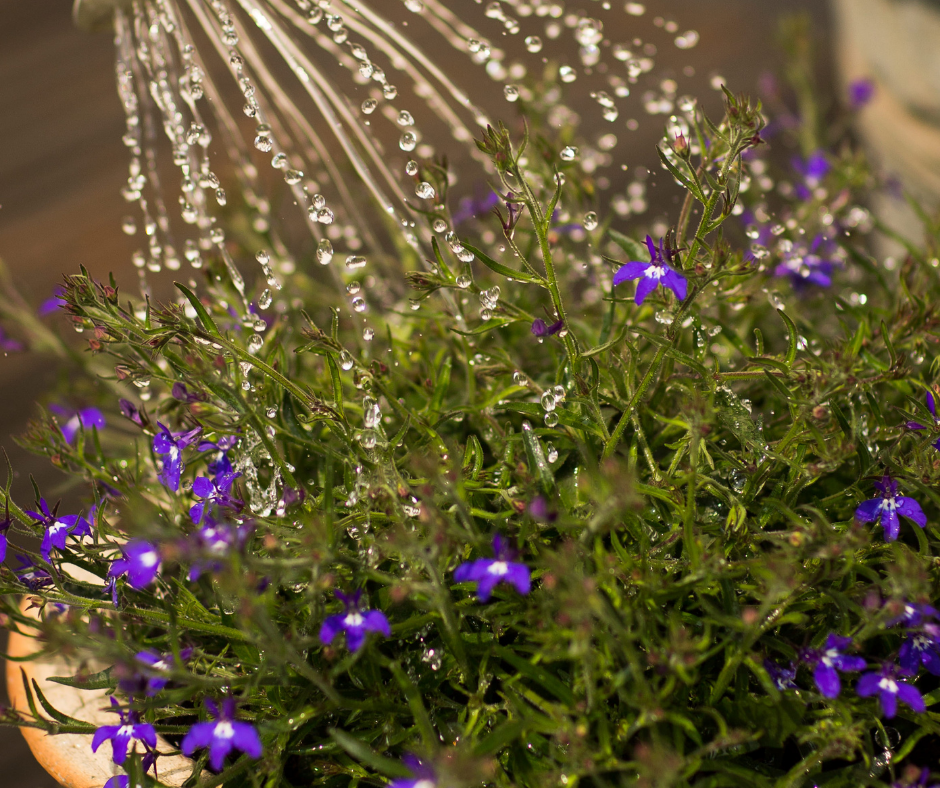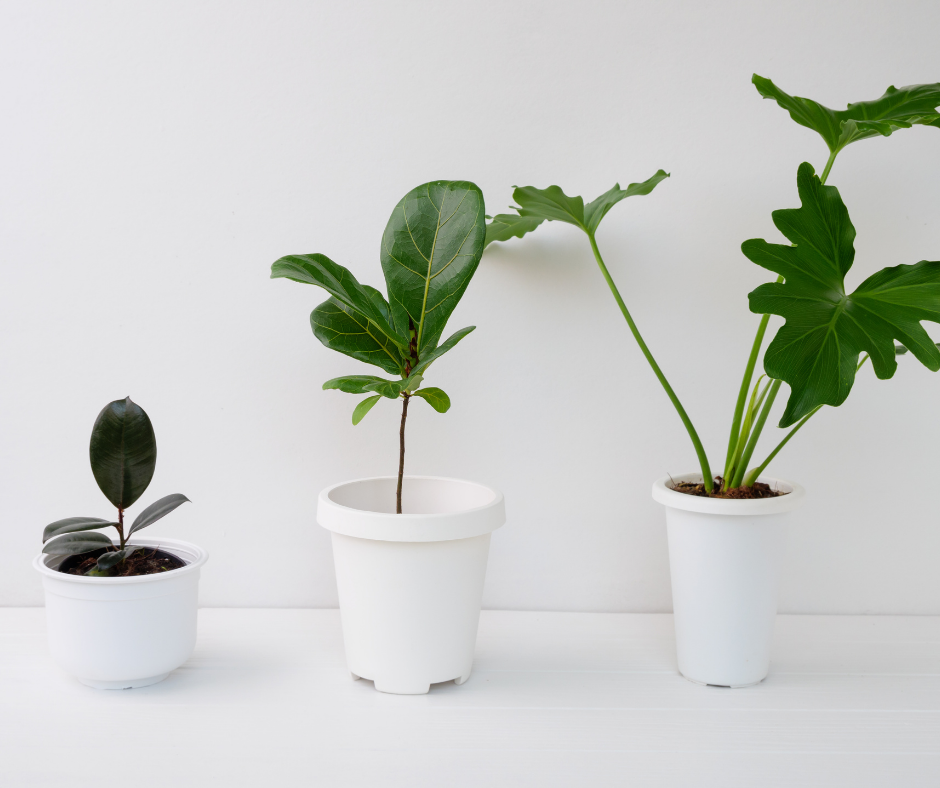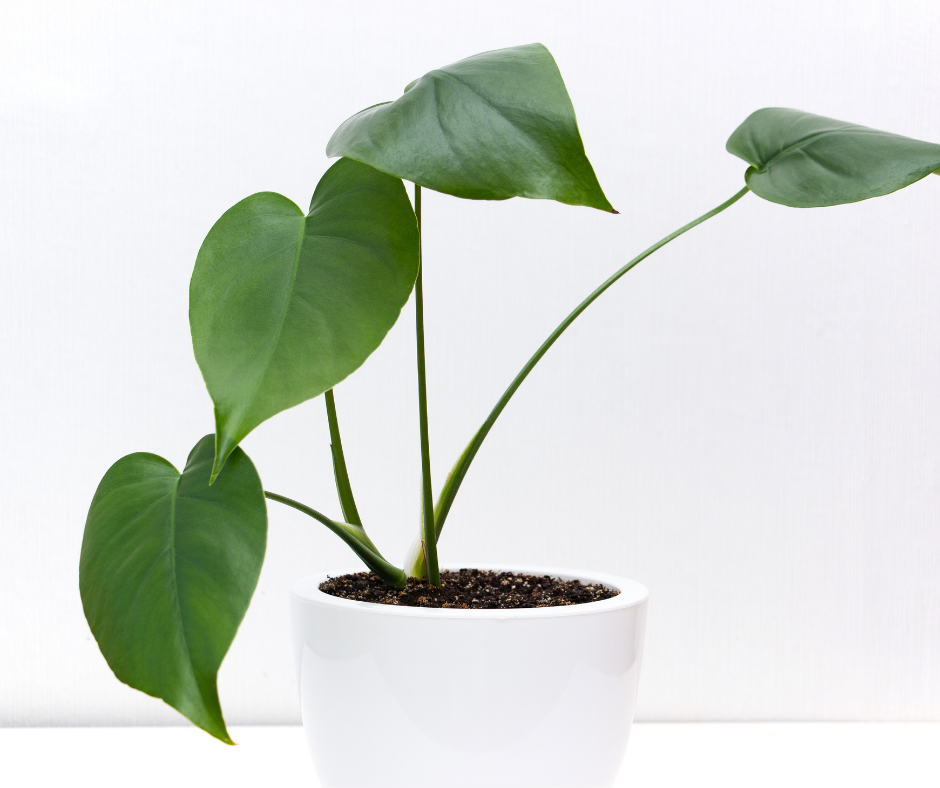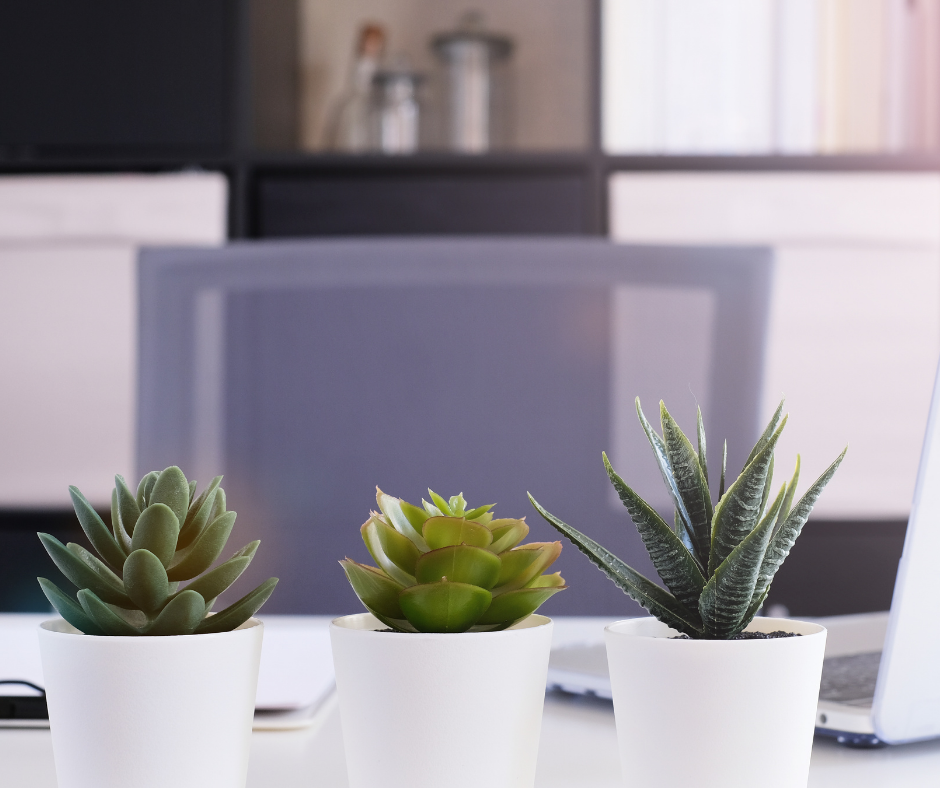HousePlantJoy is supported by our audience. When you purchase through one of our links, we may earn a small affiliate commission. As an Amazon Associate I earn from qualifying purchases. Your cost is not affected.
==================
How Often Should You Water Your Houseplants
Knowing when and how to water your houseplants is one of the most effective and straightforward strategies to guarantee that they thrive in your home. Sometimes known as death by H2O, overwatering is one of the most common errors committed by novice plant owners. Unfortunately, you may provide your plants with too much of a good thing.
All plants require water. The roots absorb water and fill the plant’s cells, strengthening the fibers and allowing the plant to create robust leaves and stems. Plants need oxygen just as much as soil moisture, which is why porous soil is crucial.
When you overwater your plant, it cannot breathe, thus smothering it. It also makes your plant more vulnerable to illnesses like root rot, which may be highly harmful to your plant’s long-term health.
How to Know When to Water Your Houseplants
Below are some considerations on how to know when to water your houseplants.
-
Type of Plant.
Some plants like damp environments, while others prefer dry conditions. Some people may tolerate drying out before a nice soak, while others require a consistently damp atmosphere. Check your plant’s water requirements since this can assist you in deciding whether or not to water your houseplants.
-
Test Soil Dryness.
Make a hole in the potting mix around your plant using your index finger. You’ll tell if the top few inches of soil are moist by feeling it. The depth to which the soil is dry for many plants is a reliable predictor of when to water your houseplants.
-
Monitor the Weight of the Plant Pot.
Because dry soil is significantly lighter than wet soil. There will be a significant weight difference between a hydrated and a dry potted plant. With a bit of experience, you’ll be able to tell when it’s time to water your houseplants just by raising them.
-
Feel the Soil Through the Drainage Holes.
Feel the bottom of the potting soil via the drainage holes at the bottom of the plant container with your fingertips. You’ll be able to evaluate whether the soil needs to be watered by assessing its dryness.
-
Watch for Signs of Wilting.
Leaves that are wilting or drooping are frequently signs that your plants are dehydrated. Use this in conjunction with a soil analysis, as other factors might cause wilting, such as overwatering or disease. It’s critical to address the root cause of wilting in your plants rather than exacerbate it.
-
Use a Moisture Meter.
You may use a moisture meter to determine whether your plants need water if you have a problematic plant or want to be more precise about the procedure. These are low-cost and dependable, and they may make a significant impact if you’re having issues.
Factors That Impact How Often You Should Water Your Houseplants
Aside from the sort of plants you’re growing, there is a slew of other elements that influence how often you’ll have to water your houseplants. Because of the variability of these conditions, you should never water on a timetable.
Size of Plant.
Larger plants require more water than those that are smaller. Larger plants absorb more via their roots, consume more for respiration, and shed more through transpiration since there is more vegetation. However, younger plants that are actively developing may have higher water requirements than bigger plants that are not actively growing.
Temperature.
Higher indoor temperatures cause evaporation and the metabolic rate of your plants to rise, causing them to dry up more quickly. Your home’s temperature may vary significantly from summer to winter and from one room to the next. Rooms that receive a lot of sunlight during the day may get relatively warm, which impacts how you will water your houseplants.
Humidity.
The rate of water evaporation from the soil and the rate of transpiration from the leaves will be affected by the humidity of the growth circumstances. When the windows are closed in the winter, and the heat is turned on, our houses have lower humidity levels. Keep this in mind while deciding whether or not to water your houseplants.
Type of Pot.
Porous materials, such as terracotta, lose water considerably more quickly than plastic pots, which prevent any water from passing through the sides. Choose a pot that is appropriate for the plants you are cultivating. Clay pots are preferable for plants that enjoy arid environments and well-draining potting mix.
Size of Pot.
Choose a pot that is appropriate for the plant. Plants that enjoy their potting soil to dry up quickly should be placed in smaller pots. Plants that like wet conditions should be uniformly placed in bigger pots.
Type of Potting Mix.
Potting soil with more organic material or tiny, densely packed particles will keep water better. You can improve drainage by using sand, perlite, or vermiculite. Premade potting soil matched to your plant is commonly available. Still, it’s quicker and less expensive to prepare your own, and you can adapt it to your plants’ specific needs.
Ventilation.
Moving air causes more evaporation, which increases your plants’ water requirements. Moderate ventilation is beneficial to plants since it reduces disease risk, although raising water requirements.
Time of Year.
When it comes to how often you should water your houseplants, the season plays a significant influence. Many houseplants grow considerably more slowly or become dormant in the winter, lowering their water requirements substantially. In addition, less light, better ventilation, and colder temperatures in the winter may drastically reduce water usage. If you want your plants to thrive, you’ll need to change your watering practices.
How to Water Your Houseplants Correctly
Below are some tips on how to properly water your houseplants.
The Plant’s Pot Matters.
Grower pots are included with most plants purchased from other sellers. These aren’t designed to be permanent homes for your plants, but instead temporary containers. Plants left in a grower’s pots for an extended period are usually always root-bound in the container, limiting their development, making it difficult to hydrate them adequately, and more prone to disease.
Pots that are a suitable size for the size of the plant are required to maintain your plant healthy. The pots should also have drainage holes to let the soil dry out after watering your houseplants. They should be placed on a saucer to allow you to saturate thoroughly while capturing any surplus water.
Houseplants Have Different Water Needs.
Plants, like people, flourish in a variety of moisture conditions, depending on the type of plant and the climate. If you’re wondering how often you should water your houseplants, you’ll need first to learn their language to figure out when it’s time to water them. Succulents, for example, prefer to be kept dry and are easily rotted if they are overwatered. Tropical potted plants, such as ferns and calatheas, require constant moisture, whereas other plants like to dry out between waterings.
Before watering your houseplants, you must first understand their specific needs and preferences. It’s advisable to pay attention to when the soil seems dry rather than sticking to a tight watering plan. Check a few inches below the topsoil with your finger or a moisture meter for moisture, and if you don’t see any, it’s time to water.
Water the Soil and Not the Leaves.
When watering your houseplants, it’s also crucial to prevent splashing the leaves. Make sure the nozzle of your watering can is pointing at the soil and not the foliage. This simple technique aids in the prevention of bacterial infections, fungal infections, and other health problems.
Water Your Houseplants Thoroughly and Evenly.
The root systems of plants are similar to their leaves. If you water one side, the roots and leaves will grow in the direction of the available water. Water your houseplants evenly around the pot to maintain it full and lush. Fill the pot with water until it runs out the bottom and into the saucer.
Dump Out Any Excess Water.
Plants don’t want their roots to be maintained in excessively damp soil, much like people don’t like wet shoes or socks on their feet. Your plant will decay if its roots are left in saturated soil for an extended period. Wait a few minutes after watering thoroughly until water drains out of the drainage hole in the saucer, then dump any leftover water to avoid soggy soil and ‘wet feet.’
Consider the Seasons.
Many plants will lie dormant during the colder seasons, saving energy and halting their growth, just as people do in the winter. Plants use significantly less water as a result than they would in the summer. This shift in behavior emphasizes the need to learn your unique plant’s language and take the time to understand when it needs to be watered.
Another critical component in keeping a healthy houseplant is the temperature in your home, significantly as the seasons change. Make sure you understand what temperature and humidity your plants require and duplicate those conditions as closely as possible.
How Long Can Houseplants Go Without Water
Most people have a habit of overwatering their houseplants. Most houseplants may survive for up to two weeks in standard indoor settings without being watered. They may not be able to withstand this neglect daily, but most of your plants will be fine if you are gone for two weeks.
Like calatheas and nerve plants, some houseplants are particularly picky about their water requirements. If you believe you’ll struggle to water your houseplants regularly, choose drought-tolerant plants. Some plants may survive for up to two weeks without water. Certain succulents, such as many cacti, can go without water for up to a month and frequently longer while still being healthy.
However, suppose you will be gone for more than a week and want to keep your plants healthy. In that case, we typically recommend some additional watering with an indoor plant watering system. Watering globes, self-watering pots, capillary mats, watering spikes, and self-watering pots are all practical solutions for keeping your plants moisturized while you’re gone.
Conclusion
When individuals see their houseplants becoming drooping or discolored, it’s usually due to a lack of water. If you don’t give your plant enough water, it won’t get the nutrients it needs to thrive. However, if there is too much water, you will starve the roots of oxygen. It usually isn’t too difficult to find a moist middle ground; it takes a little intuition and a dash of plant knowledge.
Knowing when to water your houseplants is crucial when it comes to planting care. We recommend checking your plant’s soil (with your fingertips, a chopstick, or a moisture probe) to see whether it needs to be watered. This more natural approach to plant care can help you become more familiar with your specific plants and their demands while also reducing the danger of overwatering.
Read More:

